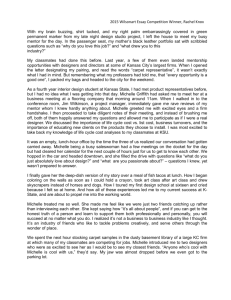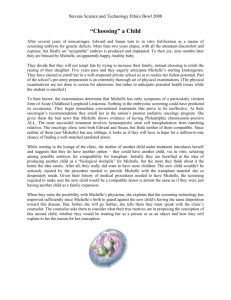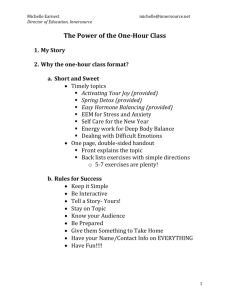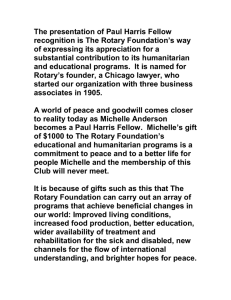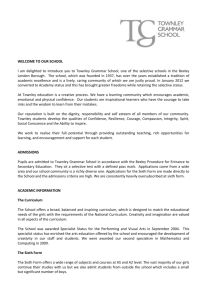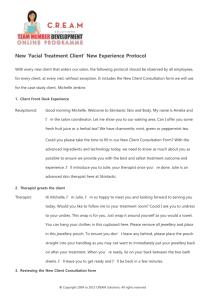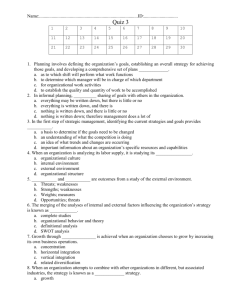Williams fund research update June 2013_HETKM
advertisement
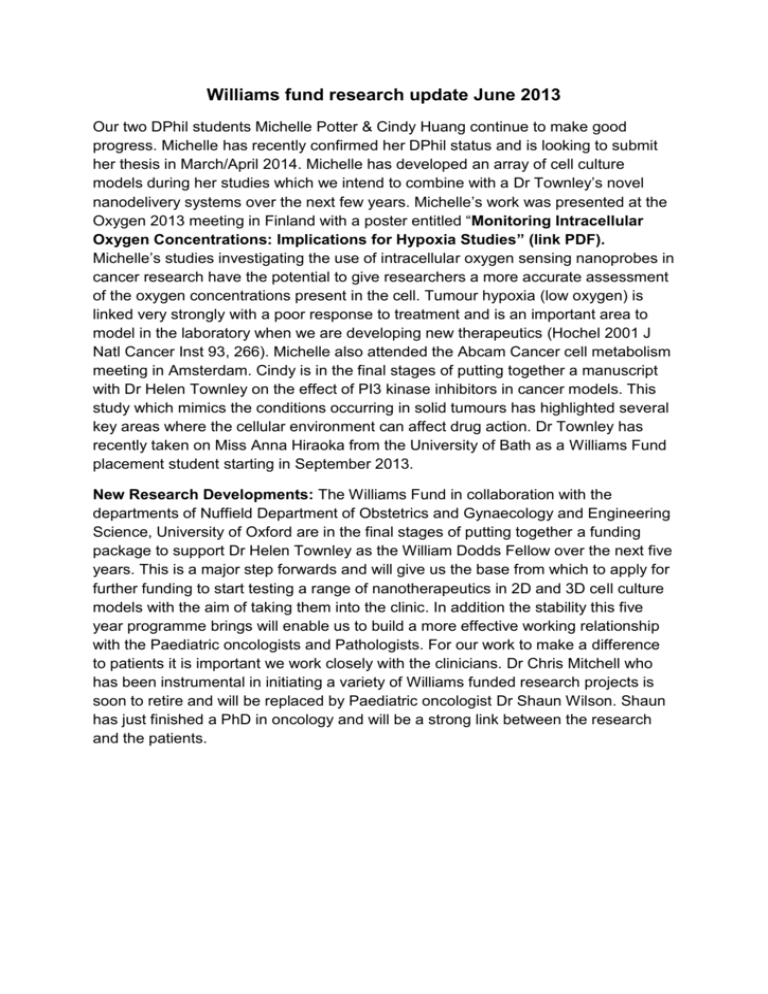
Williams fund research update June 2013 Our two DPhil students Michelle Potter & Cindy Huang continue to make good progress. Michelle has recently confirmed her DPhil status and is looking to submit her thesis in March/April 2014. Michelle has developed an array of cell culture models during her studies which we intend to combine with a Dr Townley’s novel nanodelivery systems over the next few years. Michelle’s work was presented at the Oxygen 2013 meeting in Finland with a poster entitled “Monitoring Intracellular Oxygen Concentrations: Implications for Hypoxia Studies” (link PDF). Michelle’s studies investigating the use of intracellular oxygen sensing nanoprobes in cancer research have the potential to give researchers a more accurate assessment of the oxygen concentrations present in the cell. Tumour hypoxia (low oxygen) is linked very strongly with a poor response to treatment and is an important area to model in the laboratory when we are developing new therapeutics (Hochel 2001 J Natl Cancer Inst 93, 266). Michelle also attended the Abcam Cancer cell metabolism meeting in Amsterdam. Cindy is in the final stages of putting together a manuscript with Dr Helen Townley on the effect of PI3 kinase inhibitors in cancer models. This study which mimics the conditions occurring in solid tumours has highlighted several key areas where the cellular environment can affect drug action. Dr Townley has recently taken on Miss Anna Hiraoka from the University of Bath as a Williams Fund placement student starting in September 2013. New Research Developments: The Williams Fund in collaboration with the departments of Nuffield Department of Obstetrics and Gynaecology and Engineering Science, University of Oxford are in the final stages of putting together a funding package to support Dr Helen Townley as the William Dodds Fellow over the next five years. This is a major step forwards and will give us the base from which to apply for further funding to start testing a range of nanotherapeutics in 2D and 3D cell culture models with the aim of taking them into the clinic. In addition the stability this five year programme brings will enable us to build a more effective working relationship with the Paediatric oncologists and Pathologists. For our work to make a difference to patients it is important we work closely with the clinicians. Dr Chris Mitchell who has been instrumental in initiating a variety of Williams funded research projects is soon to retire and will be replaced by Paediatric oncologist Dr Shaun Wilson. Shaun has just finished a PhD in oncology and will be a strong link between the research and the patients. Silica nanoparticles in development A) Mesoporus particles B) Particles with surface coating to allow controlled drug release C) Particles with enlarged surface area to increase drug uptake




